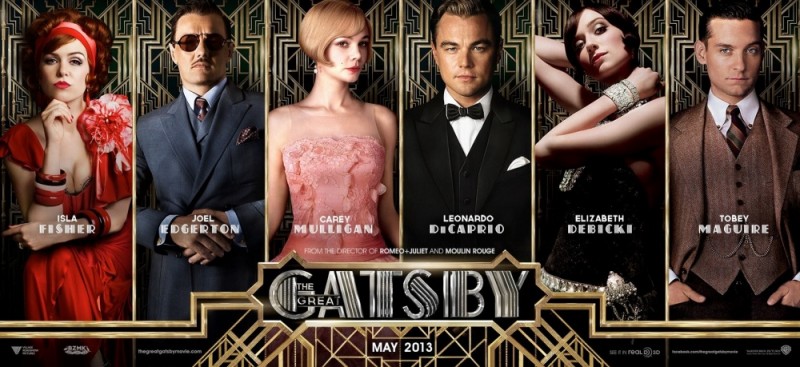Currently Browsing
Posts Tagged ‘ literature ’
Hispanic Heritage Month 2025 – Reading List for K-12
- 6 September //
- Posted in For Parents, Teaching Resources //
- Tags : literature, reading list
- Comments Off on Hispanic Heritage Month 2025 – Reading List for K-12

Hispanic Heritage Month (Sep. 15 – Oct. 15) is all about celebrating the contributions of Hispanic and Latino people to the United States. There’s no better way to celebrate Hispanic contributions and culture than through literature! Whether you’re looking for a book for a preschooler or a novel for a teenager, there are many amazing books written by Hispanic and Latino authors. Not sure where to start? We’ve highlighted a few of our favorites.
Pre-K through 2nd Grade
Abuela by Arthur Dorros
Imagine what life would be like if you could fly. In this fun picture book, Rosalba flies around Manhattan with her grandmother and learns a lot about life along the way. The story mixes English and Spanish words and helps kids learn about Hispanic culture.
Gracias Thanks by Pat Mora
What are you thankful for? No matter what language you speak, there are many things to be thankful for. Kids are challenged to find things they are thankful for, just like the young boy in this simple picture book by one of the best-known Hispanic authors for children.
Nino Wrestles the World by Yuyi Morales
Nino is a spectacular wrestler and can defeat all of the greats. Kids will love the exciting illustrations and sound words used throughout the books. Parents will love the Spanish words and pronunciation guides.
3rd through 5th Grade
Esperanza Rising by Pam Munoz Ryan
Pam Munoz Ryan is one of the best-known Hispanic authors for this age group and Esperanza Rising is one of the best-known Hispanic novels for kids. This story follows a young girl as she loses her father, moves to the United States, and loses her social status, all while discovering herself.
Return to Sender by Julia Alvarez
This book discusses cross-cultural friendships and keeping hold of your heritage while trying to assimilate. It follows the relationship between a young farm boy whose parents hire migrant workers to help keep their farm afloat. This novel has won many awards.
My Name is Maria Isabel by Alma Flor Ada
Every child goes through a phase where they must discover who they are and stand up for themselves. In this novel, Maria’s teacher wants to call her Mary, but Maria is a name that holds a lot of significance. It follows Maria and her family as they learn how to balance their heritage with their American life.
6th through 8th Grade
The Dreamer by Pam Munoz Ryan
Pablo Neruda is a famous Hispanic poet and The Dreamer offers a fictional take on his life. This award-winning novel tells the tale of a Chilean boy who goes on to become a famous poet despite having an incredibly negative father. It is a very motivational read for middle school.
Baseball in April and Other Stories by Gary Soto
Gary Soto has written numerous coming-of-age stories for children and young adults. This is one of his best-known collections and a great read for pre-teen and teenage boys. The collection, which has also won numerous awards, including the ALA Best Book for Young Adults, shares stories from Soto’s life growing up in California, and shows not only a Hispanic experience, but an experience all boys can relate to on some level.
I Lived on Butterfly Hill by Marjorie Agosin
This award-winning novel tells the story of Celeste, an eleven-year-old girl from Chile who is sent to live with her aunt in the United States. Not only does she have to learn how to navigate life in the United States, she must also come to terms with what is going on in her home country and worry about her parents who are still there.
9th through 12th Grade
House on Mango Street by Sandra Cisneros
This is one of the quintessential story collections that every student should read. The coming-of-age book follows Esperanza Cordero as she grows up and learns to connect her Latino culture with her desire for something better. It also includes the popular short story Eleven.
How the Garcia Girls Lost Their Accents by Julia Alvarez
This novel has won numerous awards and has been hailed as a “new classic” for the twenty-first century. It tells the tale of the four Garcia sisters who flee the Dominican Republic and must learn to start their lives again in America. Each one has a different experience, but all are connected.
Cuba 15 by Nancy Osa
Violet Paz does not know a lot about her Latina heritage and does not consider herself anything but American. In fact, she is half Polish. This book details how she comes to learn more about her Latina heritage as she plans her traditional coming-of-age party when she turns 15.
While these are some of our favorite books for Hispanic Heritage Month, we know there are many other great books out there. What are some of your favorite books that celebrate Hispanic and Latino culture?
Also, remember to check out our graphic organizers which you can use to help kids think critically and conduct an in-depth analysis of these classic texts.
For more worksheets for Hispanic Heritage month, visit our partner site KidsKonnect and browse their library for dozens of topics!
If you enjoyed this read, you might also like what KidsKonnect has to say. Check out their articles today.
Teaching with Movies in the ELA Classroom
- 17 November //
- Posted in For Parents, Teaching Resources //
- Tags : literature, movies, reading list, text analysis
- Comments Off on Teaching with Movies in the ELA Classroom

When it comes to reading a novel, many students shrug off the reading and just watch the movie version instead. Well, two can play at that game. Teachers can give students a little of what they want by incorporating the movie versions of books into their discussion and activities, but that’s not the only way movies play a role in the ELA classroom. A movie is just another type of text and it can be analyzed just as easily as a novel, a short story, or a poem.
Our Advice for Teaching with Movies
The Movie Version
The easiest way to incorporate movies in the ELA classroom is simply to have students watch the movie version of the novel or short story they are reading. While many teachers typically show the movie version after students read, others choose to show the movie before they read. This may be particularly helpful when it comes to reading more difficult texts such as Shakespearean plays or ancient texts such as The Iliad and The Odyssey. Watching the movie first provides students with a context and general overview of the book, making it easier to understand and recognize key details as they read.
If students watch the movie before they read the book, chances are they will notice that the movie version failed to include many details they find in the book and will begin to make comparisons between the two. To ensure students actually read the book, teachers should pay attention to the differences between the book and movie, not only giving students a chance to compare and contrast, but also testing their knowledge on facts and details they know were not included in the movie version. Help Teaching’s Comparing a Book and Movie Worksheet can give you an activity to start with.
Help Teaching also offers worksheets to help you quiz students on popular novels that have been turned into movies. Many of our worksheets can be used with either the book or the movie, particularly those that focus on characters because they can lead to discussions about how well the movie portrayed the characters in the book. Some character worksheets you’ll find on Help Teaching include:

- Characters in Twilight
- Characters in A Christmas Carol
- Characters in To Kill a Mockingbird
- Characters in The Great Gatsby
- Characters in The Hunger Games
If your students get excited about new releases, such as The Hunger Games, incorporate their interests in the classroom with some of our other Hunger Games worksheets:

- The Hunger Games
- The Hunger Games Basics
- The Hunger Games – Catching Fire
- The Hunger Games – Mockingjay
Analyzing a Movie
Instead of watching the movie version of a novel, the movie itself can be the text. After watching a movie, students can still answer many of the same questions they’d be expected to answer after reading a book. In fact, Help Teaching’s General Movie Analysis worksheet has students analyze the theme, characters, and other literary elements found within a movie. The same can be done with the General Documentary Analysis worksheet to help students analyze documentaries and other informational films.
Learning through Movies
Teachers may also choose to use movies to introduce themes or introduce students to various literary concepts. For example, when teaching about the hero’s journey, teachers can have students watch the movie Hercules to familiarize themselves with what the different stages look like before tackling a book such as The Odyssey. Instead of having students read a book about a particular period in history, teachers could have them watch multiple movies that tackle the subject. For example, when studying The Holocaust, instead of reading The Diary of Anne Frank, students could watch Au Revoir Les Enfants, The Boy in the Striped Pajamas and a movie version of the popular diary, comparing how they portray that specific event.
Incorporating movies in the curriculum also helps when teaching students about specific elements of literature or writing and teachers don’t always have to show an entire movie to do it. Want to help students understand the importance of public speaking or how to write a great speech? Show them a clip of an actor delivering a truly moving speech during a movie. Having trouble getting students to understand the concept of a flashback? Help them see it done in movie form. Movie clips can be used to teach about characterization, conflict, setting, symbolism, and other key elements of literature.
Teachers who need help getting started incorporating movies in their classroom can find a wealth of ideas through Teach With Movies, which offers lesson plans, and lists of movies and the skills they cover. For more information on how often to include movies in the classroom, also check out How to Use Movies in the Social Studies Classroom. While it is not focused on the English classroom, it may provide English teachers and teachers in other classrooms with ideas about how to get started showing movies in their own classrooms.
Watch Help Teaching’s literature section for more worksheets aligned to movies as they come out.


